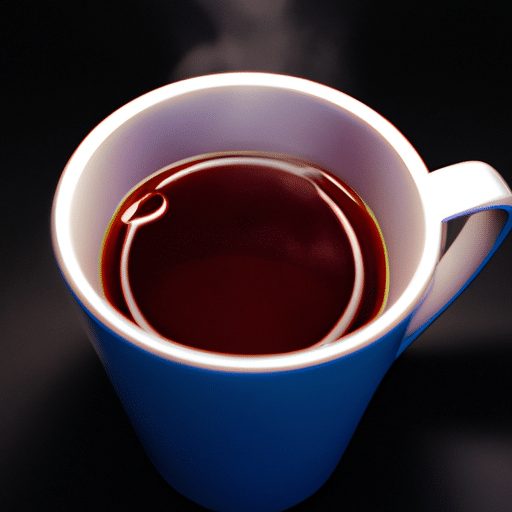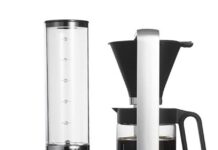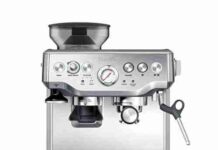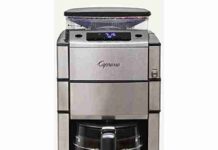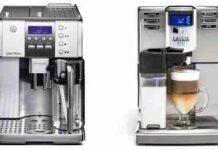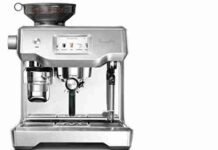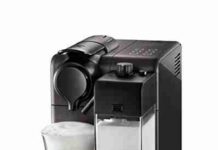Coffee lovers rejoice! We have all experienced the disappointment of taking a sip of our morning java only to be met with a bitter, burnt taste. But fear not, as we are here to help you avoid this culinary calamity. In this article, we will explore some simple yet effective tips and tricks to ensure that your coffee is always smooth, flavorful, and free from that unpleasant burnt aftertaste. Say goodbye to those early morning coffee woes and hello to a blissful cup of perfection every time.
Choose the Right Coffee Beans
When it comes to making a delicious cup of coffee, the most important factor to consider is the quality and freshness of the coffee beans. To avoid the burnt taste in your coffee, it is essential to choose the right type of coffee beans.
Consider the Freshness and Roast level of the Beans
Coffee beans are at their peak flavor within a few weeks of being roasted. Therefore, it is crucial to check the packaging date or roast date when purchasing coffee beans. Opt for beans that have been roasted recently to ensure the freshest taste.
Additionally, the roast level of the coffee beans can also affect the taste of your brew. Dark roasted beans tend to have a smoky and strong flavor, while lighter roasts are more delicate and have a brighter acidity. To avoid a burnt taste, it is recommended to choose medium roast coffee beans as they offer a balanced flavor profile.
Avoid Oily Beans
Oily coffee beans may seem appealing, but they can lead to an unpleasant burnt taste in your coffee. When coffee beans are excessively oily, it indicates that they have been over-roasted. These beans are more likely to clog the coffee maker and result in a bitter, burnt flavor. Look for beans that have a dry surface with minimal oiliness to ensure a smooth and flavorful cup of coffee.
Opt for Medium to Coarse Ground Beans
The grind size of the coffee beans can greatly impact the taste of your brew. To avoid burnt tasting coffee, it is advisable to choose a medium to coarse grind. Finely ground coffee can over-extract and release more bitterness into your cup. On the other hand, a coarser grind allows for a slower extraction process and a smoother taste. Experiment with different grind sizes to find the perfect balance for your preferred brewing method.
Adjust Brewing Temperature
The brewing temperature plays a vital role in extracting the flavors from the coffee beans. To achieve a well-balanced and non-burnt cup of coffee, it is important to adjust the brewing temperature accordingly.
Understand the Ideal Brewing Temperature
The ideal brewing temperature for coffee is between 195°F (90°C) and 205°F (96°C). This temperature range allows for proper extraction without scorching the coffee grounds. Investing in a coffee maker with a temperature control feature or a built-in thermometer can ensure that your coffee is brewed at the optimal temperature.
Check and Adjust the Coffee Maker’s Brewing Temperature
If your coffee maker does not have a temperature control feature, it is essential to check the brewing temperature manually. Use a digital thermometer to measure the temperature of the water as it passes through the coffee grounds. If the temperature exceeds the ideal range, adjust the brewing time or reduce the heat setting to prevent the coffee from tasting burnt.
Control Brewing Time
The brewing time also contributes to the flavor profile of your coffee. To avoid a burnt taste, it is crucial to follow the recommended brewing time and pay attention to the duration of the brewing process.
Follow the Recommended Brewing Time
Different brewing methods have specific recommended brewing times. Whether you are using a drip coffee maker, a French press, or a pour-over method, it is important to adhere to the suggested brewing time provided by the manufacturer or coffee experts. This ensures that the coffee is extracted properly without over-extraction, which can result in a burnt taste.
Use a Timer or Clock
To achieve consistent brewing results, it is advisable to use a timer or clock to track the brewing time accurately. Set a timer as soon as you start the brewing process and ensure that the coffee is not left brewing for longer than the recommended time. Over-brewing can lead to an intensified bitterness and a burnt aftertaste.
Avoid Leaving Coffee Sitting on the Hot Plate
Leaving brewed coffee sitting on the hot plate of the coffee maker for an extended period can lead to a burnt taste. The hot plate continues to heat the coffee, causing it to lose its optimal flavor and develop a bitter note. To prevent this, transfer the brewed coffee to a thermal carafe or insulated mug immediately after brewing. This will help maintain the temperature without the risk of overheating.
Clean the Coffee Maker Regularly
A clean coffee maker is essential for a flavorful and non-burnt cup of coffee. Regular maintenance and cleaning can remove coffee residue and oils that can accumulate over time and affect the taste of your brew.
Remove Coffee Residue and Oils
Coffee oils and residue can build up inside the coffee maker and contribute to a burnt taste. It is recommended to clean the brewing components, such as the filter basket and the carafe, after each use. Use warm soapy water and a soft brush to scrub away any residue or oils. This will help ensure that your coffee maker remains clean and free from any unwanted flavors.
Descale the Coffee Maker
Over time, mineral deposits can accumulate inside the coffee maker, affecting its performance and the taste of your coffee. Descaling is the process of removing these mineral deposits, and it should be done regularly to prevent a burnt taste. Follow the manufacturer’s instructions to descale your coffee maker using either vinegar or a specialized cleaning solution. This will help eliminate any build-up and maintain the optimal brewing conditions.
Use Vinegar or Special Cleaning Solutions
Vinegar is a natural and effective cleaning agent that can remove stubborn stains and residue. You can use a mixture of equal parts vinegar and water to clean the internal components of your coffee maker. Alternatively, there are also commercial cleaning solutions available that are specifically designed for coffee makers. These solutions can provide a deep clean and help eliminate any potential sources of a burnt taste.
Proper Water-to-Coffee Ratio
Achieving the right water-to-coffee ratio is crucial for a well-balanced and flavorful cup of coffee. By following the suggested coffee-to-water ratio, you can ensure that the extraction process is optimized, avoiding any burnt flavors.
Follow the Suggested Coffee-to-Water Ratio
The recommended coffee-to-water ratio varies depending on personal preference and brewing method. As a general guideline, a ratio of 1:16 (1 part coffee to 16 parts water) is commonly used for a balanced cup of coffee. However, feel free to adjust the ratio according to your taste preferences. Using too little coffee may result in a weak brew, while using too much coffee can lead to bitterness and a burnt taste.
Ensure Uniform Extraction
To avoid a burnt taste in your coffee, it is crucial to ensure a uniform extraction of the coffee grounds. Uneven extraction can result in varying degrees of bitterness, making the coffee taste burnt in some areas. Use techniques such as stirring the coffee grounds after pouring hot water or agitating the brewing device to promote uniform saturation and extraction. This will help achieve a smooth and well-balanced flavor profile.
Avoid Overfilling the Coffee Maker
Overfilled coffee makers can lead to overflow, uneven extraction, and ultimately, a burnt taste. It is important to follow the capacity guidelines provided by the manufacturer and avoid exceeding the maximum fill line.
Do Not Exceed the Maximum Fill Line
Each coffee maker has a designated maximum fill line that indicates the appropriate amount of water to be used. Exceeding this limit can cause the coffee maker to overflow, resulting in a messy cleanup and potentially affecting the taste of the coffee. Always ensure that you measure the correct amount of water and avoid overfilling the reservoir.
Leave Room for Coffee Expansion
When brewing coffee, the hot water causes the coffee grounds to expand and release gases. If the coffee maker is overfilled, there is no room for this expansion, leading to improper extraction and a burnt taste. By leaving a little space at the top of the coffee maker, you allow the coffee grounds to bloom and fully extract their flavors, ultimately resulting in a more enjoyable cup of coffee.
Consider the Quality of Water
The quality of water used in brewing coffee can significantly impact the taste. To avoid any unwanted flavors, it is important to consider the quality of water you use.
Use Filtered or Bottled Water
Tap water may contain minerals, chemicals, or chlorine that can affect the taste of your coffee and potentially contribute to a burnt flavor. Using filtered water or bottled water can help eliminate any impurities and ensure a cleaner taste. If you live in an area with hard water, using a water softener or filtering device specifically designed for coffee makers can be beneficial.
Avoid Tap Water with Excessive Minerals or Chlorine
If using tap water is your only option, it is advisable to filter it before brewing. Excessive minerals or high levels of chlorine can alter the taste of the coffee and contribute to a burnt flavor. There are various water filters available, such as activated charcoal filters, that can help remove any unwanted substances and improve the overall quality of your water.
Use a Thermal Carafe or Insulated Mug
To maintain the freshness and flavor of your brewed coffee, it is important to transfer it to a thermal carafe or insulated mug immediately after brewing. This helps prevent the coffee from overheating and developing a burnt taste.
Transfer Brewed Coffee Immediately
When coffee sits on a hot plate for an extended period, it continues to cook and can become over-extracted, resulting in a burnt taste. By transferring the brewed coffee to a thermal carafe or insulated mug, you can maintain its ideal temperature without the risk of overcooking. This also allows you to enjoy your coffee at your own pace without sacrificing its flavor.
Prevent Extended Heating on Hot Plates
If you prefer to keep your coffee in the coffee maker, make sure to turn off the hot plate after a short period to avoid excessive heating. Extended heating can cause the coffee to become bitter and burnt. If you plan to drink multiple cups of coffee throughout the day, consider investing in a coffee maker with a thermal carafe that keeps the coffee hot without the need for a hot plate.
Pay Attention to Brewing Equipment
The quality and settings of your coffee maker can have a significant impact on the taste of your brewed coffee. To avoid a burnt flavor, it is important to pay attention to your brewing equipment.
Check Coffee Maker Settings
Some coffee makers have adjustable settings, allowing you to control the brewing temperature or brewing time. It is important to familiarize yourself with these settings and adjust them accordingly to avoid burnt-tasting coffee. Refer to the user manual or manufacturer’s guidelines to understand how to optimize the settings for the best possible results.
Consider Investing in a High-Quality Coffee Maker
If you consistently experience a burnt taste in your coffee, it may be worth considering investing in a high-quality coffee maker. Cheap or poorly designed coffee makers may not provide the necessary controls or features to achieve the desired brewing conditions. Look for a coffee maker with temperature control, adjustable settings, and a reputation for consistent brewing performance.
Avoid Storing Coffee in the Coffee Maker
Leaving leftover brewed coffee in the coffee maker can lead to a burnt taste in your next brew. To preserve the freshness and quality of your coffee, it is recommended to transfer any remaining coffee to a thermal flask or airtight container.
Transfer Leftover Coffee to a Thermal Flask or Airtight Container
When coffee sits in the coffee maker for an extended period, it can continue to heat and pick up unwanted flavors, resulting in a burnt taste. To prevent this, decant any remaining brewed coffee into a thermal flask or airtight container as soon as possible. This will help maintain the coffee’s temperature and flavor, allowing you to enjoy it later without any off-notes.
By following these tips and techniques, you can avoid the unpleasant burnt taste in your coffee and enjoy a flavorful and satisfying cup every time. Remember to choose the right coffee beans, adjust the brewing temperature and time, clean your coffee maker regularly, maintain the proper water-to-coffee ratio, and pay attention to the quality of water and brewing equipment. With these considerations in mind, you can elevate your coffee-making experience and savor the true taste of your favorite brew.


